Focus Finland
57 mins
For this compilation dealing with found images and other traces, I have chosen Finnish artists’ moving image works where the original materials have been given a new life. The use of technology by humans and the scars or scorched marks of history are being paid special attention. Like all bodies, film bodies can get old and damaged and still express lived vividity. The traces of the past are not resurrections but reminders that they are living entities, made freshly visible within new bodies of moving images.
Kari Yli-Annala
BUY TICKETS
Finland
Part 1 - Experimented, (ab)used, remembered
57 mins
For this compilation dealing with found images and other traces, I have chosen Finnish artists’ moving image works where the original materials have been given a new life. The use of technology by humans and the scars or scorched marks of history are being paid special attention. Like all bodies, film bodies can get old and damaged and still express lived vividity. The traces of the past are not resurrections but reminders that they are living entities, made freshly visible within new bodies of moving images.
Kari Yli-Annala
BUY TICKETS
Thu 21 Oct
21:30 - 23.30 / ACUD KINOMika Taanila
THE ZONE OF THE TOTAL ECLIPSE
2006, 6' 00 , 16 mm

With two 16mm film projectors. Description of the work (from Light Cone): ”A re-editing of scientific left-over film footage from a solar eclipse measurement that took place in 1945, in northern Finland. The film camera and sound recorder were used for the first time in history to measure the exact distance between two continents: Europe and North America. The film has two separate reels - positive («The Sun») and negative («The Moon») - which are
projected simultaneously.”
Miia Rinne
SOSIAALINEN FYSIIKKA (SOCIAL PHYSICS)
2009, 2' 50, digital

In Social Physics (2009) by Miia Rinne, a small box-like object is moved on a table by fingers; pencils are then rolled under it. A big object is moved similarly in a social effort by a group of humans.
Mika Taanila
FYSIKAALINEN RENGAS (PHYSICAL RING)
2002, 4' 32, 35 mm
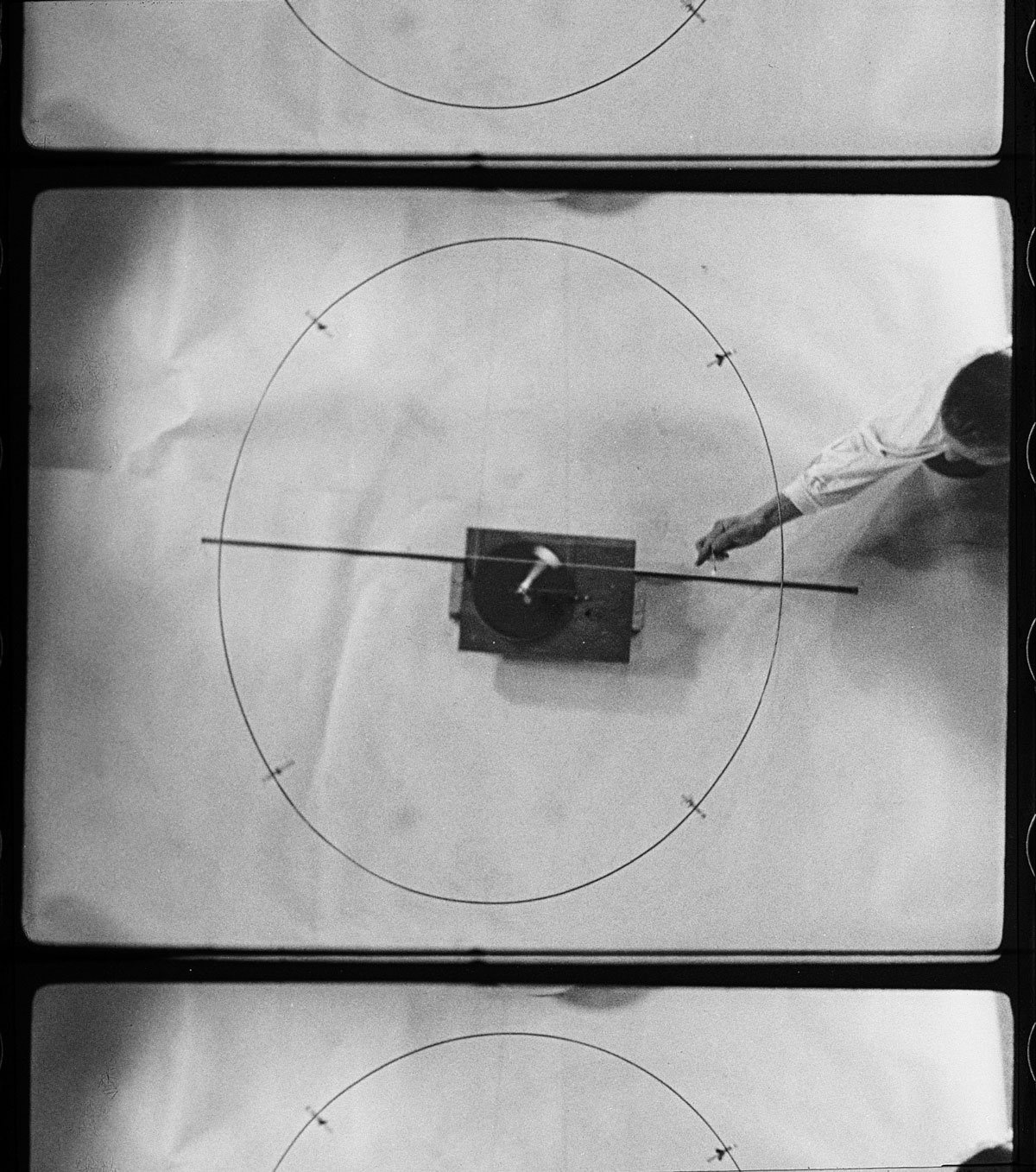
The works of filmmaker and visual artist Mika Taanila often reflect the human use of technology through avant-garde film-related practice. Taanila’s Physical Ring (2002) is based on found footage of a scientific experiment, the purpose of which remains unknown. Only the words “Fysikaalinen rengas” (“Physical ring”) were written on the film can, retained in the Finnish Film Archive. The hypnotic soundtrack is by recently deceased electronic musician and composer Mika Vainio (1963–2017).
Seppo Renvall
PALUU IHMISYYTEEN (RETURN TO HUMANITY)
2007, 4' 26, digital
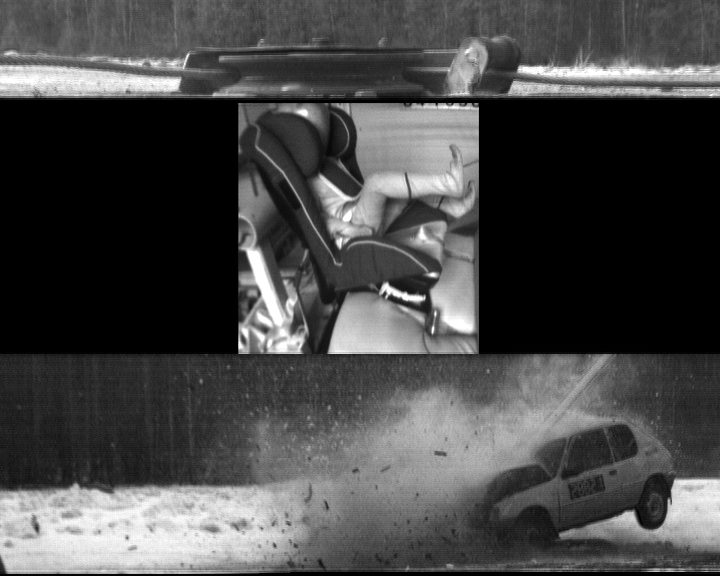
In Return to Humanity (2007), Seppo Renvall layers a collage of slow-motion images filmed using a high-speed film camera made by a Finnish inventor for industrial purposes, accompanied by a soundtrack of engine noises assembled by the musician and composer Zape Leppänen (1949 – 2019). In Deep Six (2007), Sami van Ingen explores three aspects of cinematic space: a little narrative of a Hollywood B-film, the use of electrography (colour photocopy) in film and the position and movement of the frame line. Van Ingen and Renvall were founding members of HEP (Helsinki Film Workshop). During its active years as a collective (1989 – 1996), HEP adopted the practice of experimental film and video cooperatives, including the use of found footage
Sami van Ingen
DEEP SIX
2007, 7' 00, 35 mm
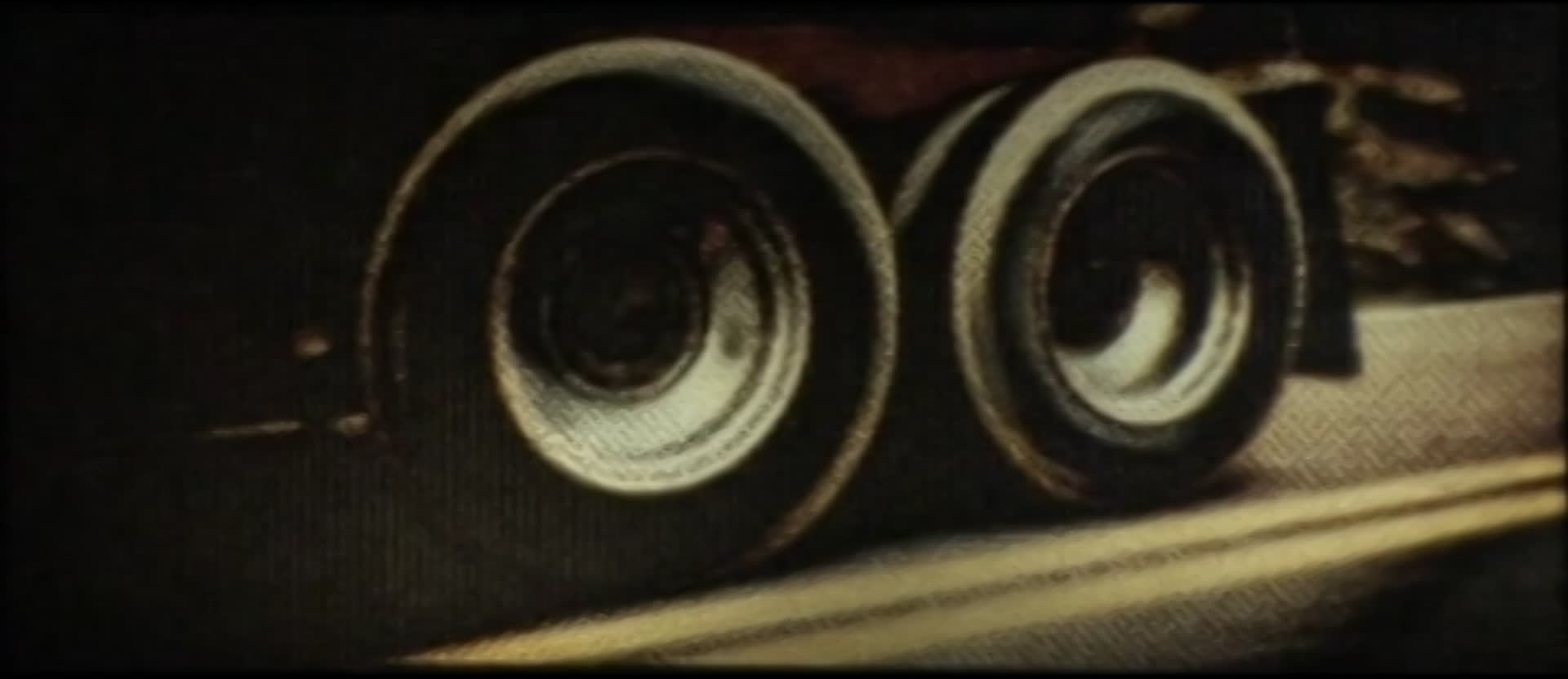
In Deep Six (2007), Sami van Ingen explores three aspects of cinematic space: a little narrative of a Hollywood B-film, the use of electrography (colour photocopy) in film and the position and movement of the frame line. Van Ingen and Renvall were founding members of HEP (Helsinki Film Workshop). During its active years as a collective (1989 – 1996), HEP adopted the practice of experimental film and video cooperatives, including the use of found footage.
Saara Ekström
SHADOW CODEX
2021, 12' 30, digital
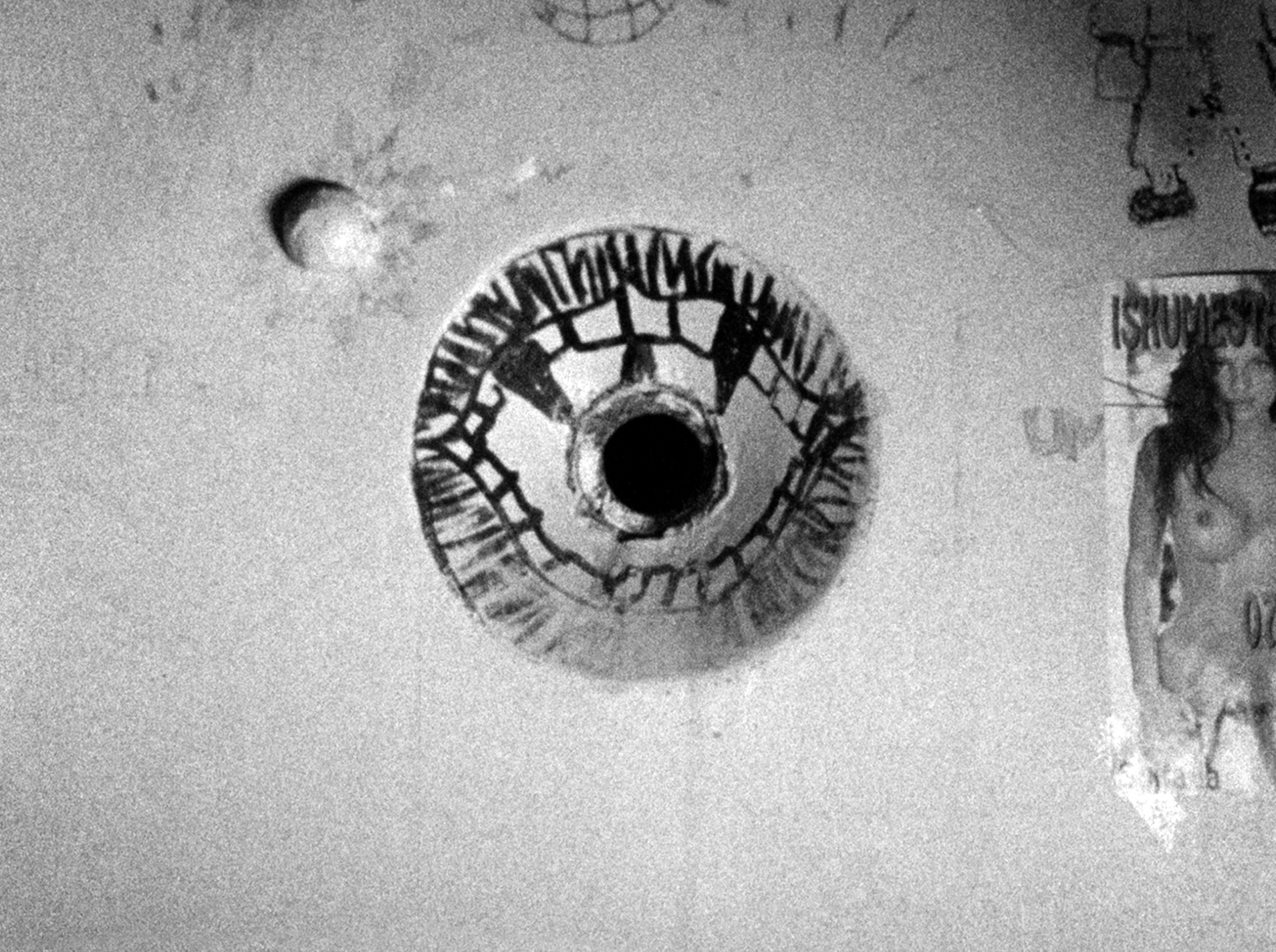
In Saara Ekström’s Shadow Codex (2021), John Cage’s composition “Perilous Night” (1964) punctuates a walk along the pictures, texts and traces drawn, written and burned in a prison’s walls. Like Cage’s music, the work can be described as ”a journey to the nocturnal side of the soul”.
Sami van Ingen
HATE
2012, 12' 00, 35 mm

In Hate (2012), Sami van Ingen explores national myths and polarities using the images from the Finnish-Soviet film Sampo (1959). Sampo is based on the Finnish national epic Kalevala, where the people living in Väinölä are in confrontation with Pohjola, understood as the dark and distant location in the North. Both places are fictional. In the real world, Sápmi (the area inhabited by Sámi people in the northern parts of Norway, Sweden, Finland and Kola Peninsula in Russia) have been harshly appropriated by governments and businesses in the past through colonial racism disguised as science, and in the present day by industry and tourism.
Elina Oikari
GOVADAS
2018, 08' 43, digital
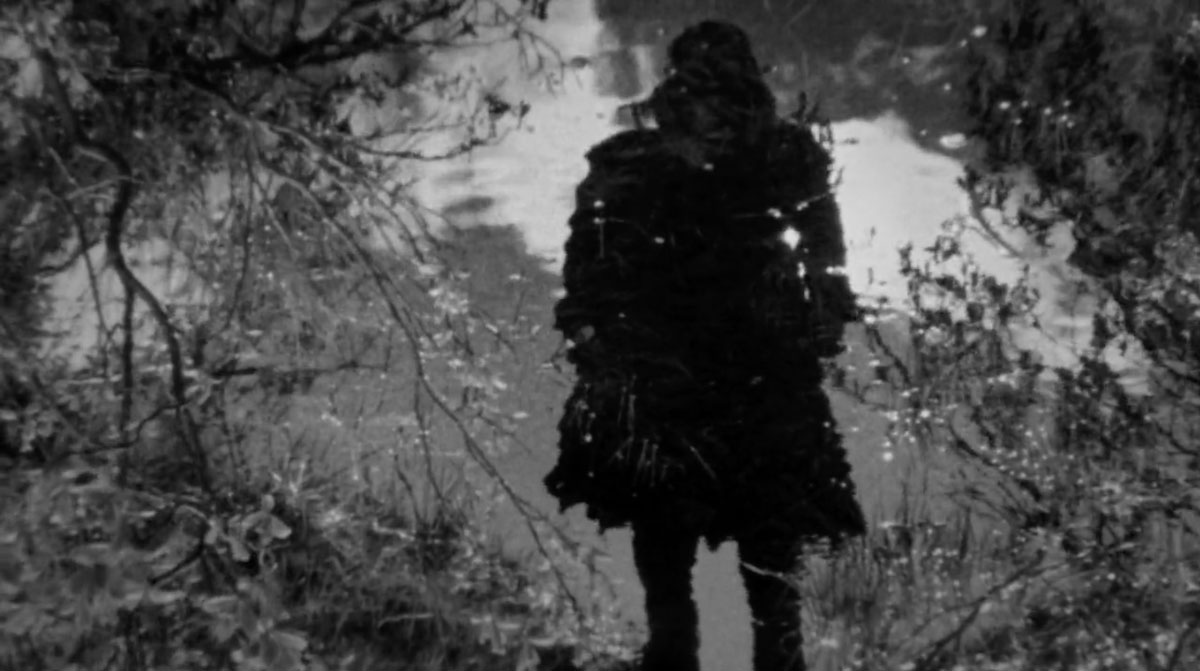
In Elina Oikari’s Govadas (2018), pictures of indigenous people depicted in archive film from the 1940s reappear hauntingly among super-8 images filmed in the present day, accompanied by the poetry of Nils Aslak Valkeapää.
SCHEDULE 2021
Thu 21
18:30 / ACUD BACKYARD
Festival Opening
19.30 / ACUD STUDIO
Selection #1
Voyages and Journals
21:30 / ACUD KINO
Focus
Finland
Part 1 - Experimented, (ab)used, remembered
Fri 22
14:00 - 17:00 / ACUD STUDIO Workshop
LaborBerlin
introducing the concept & material w/ examples
18:00 / ACUD STUDIO
Selection #2
Symphonious Cities / Urban Ecologies
20:30 / ACUD KINO
Selection #3
Inner and Outer Space
22:30 / ACUD KINO
Focus
Finland
Part 2 - Consumed, compressed, resurfaced
Sat 23
12:00 - 17:00 / ACUD STUDIO
Workshop
LaborBerlin
Exercises on perception / introducing editing with super8
15:00 - 16:45 / ACUD GALLERY
Occulto presents
textîles – threading speculative archipelagoes (th)reading session – performative presentation by textîles
17:00 - 17:45 / ACUD GALLERY Occulto presents
textîles – threading speculative archipelagoes
publishing textiles – conversation with TAUKO Magazine
18:00 - 20:00 / ACUD GALLERY Occulto presents
textîles – threading speculative archipelagoes
stitch and bitch – social sewing
with Agente Costura
18:00 / ACUD STUDIO
Selection #4
Transfiguration
21:00 / ACUD KINO
Focus
Peter Tscherkassky
Part 1
Sun 24
12:00 - 17:00 / ACUD STUDIO
Workshop
LaborBerlin
Editing the film and screening the results
15:00 - 16:45 / ACUD GALLERY
Occulto presents
textîles – threading speculative archipelagoes(th)reading session – performative presentation by textîles
17:00 - 19:00 / ACUD GALLERY
Occulto presents
textîles – threading speculative archipelagoes
reading session – collective collage of texts with Sina Ribak
20:00 / ACUD KINO
Selection #5
The Personal is Radical
22:10 / ACUD KINO
Focus
Peter Tscherkassky
Part 2